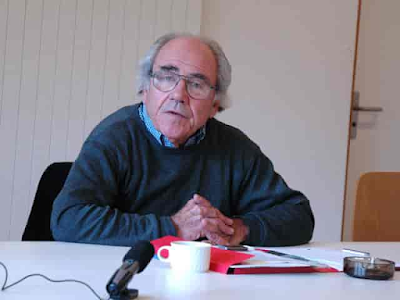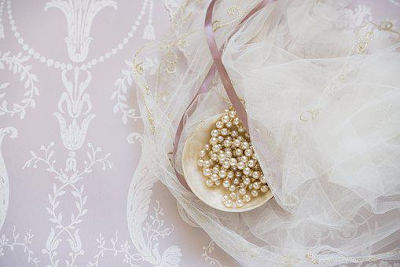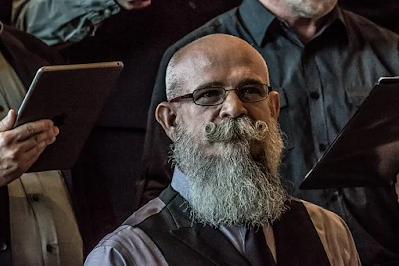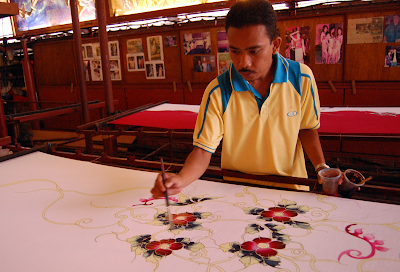Featured
- Get link
- X
- Other Apps
WHO WAS ALAA AZZEDINE?
Alaa Azzedine was born in a farming family descended from Spanish Arabic stock in southern Tunisia about 1940.
He was raised in Tunis by his maternal grandparents and enrolled at the École des Beaux-Arts de Tunis to study sculpture at the age of fifteen.
His passion in form, however, quickly shifted him toward fashion.
Alaa's career began with a part-time job completing hems (at first with the help of his sister, who was also a fashion student).
He worked as a dressmaker's assistant, copying couture dresses for affluent Tunisian clientele designed by such Parisian couturiers as Christian Dior, Pierre Balmain, and Cristóbal Balenciaga; these sumptuous and exquisite designs established a benchmark for excellence that Alaa has followed ever since.
Alaa relocated to Paris in 1957.
His first work, for Christian Dior, lasted barely five days; the Algerian conflict had recently started, and Alaa, being Arabic, was most likely unwelcome.
After that, he worked on two collections for Guy Laroche, where he learned the fundamentals of dressmaking.
Alaa started to receive private projects after being introduced to the top of Parisian society by a Paris-based compatriot (Simone Zehrfuss, wife of the architect Bernard Zehrfuss).
He worked as a maid and dressmaker for the comtesse Nicole de Blégiers from 1960 and 1965, and subsequently opened a modest salon on the Left Bank, where he developed a loyal private clientele.
He stayed there until 1984, designing fine apparel for celebrities such as Arlette-Leonie Bathiat, Greta Garbo, and Cécile de Rothschild, a cousin of the renowned French banking dynasty.
Alaa also worked on projects for other designers, like as Yves Saint Laurent's Mondrian-inspired shift dress, for which he produced the prototype.
Ready-to-Wear Collections
By the 1970s, Alaa's emphasis had switched from custom-made gowns to ready-to-wear for an increasing clientele of young, daring clients, in reaction to the shifting fashion scene.
He designed for Thierry Mugler towards the end of the decade and created a collection of leather clothes for Charles Jourdan.
They were rejected because they were too inflammatory, but they have been stored in Alaa's huge archive ever since.
He debuted his first collection in 1981, and he quickly gained worldwide acclaim after being praised by the French fashion press.
He debuted his prêt-à-porter, or ready-to-wear, collection at Bergdorf Goodman in New York in 1982, and he launched a Beverly Hills shop in 1983.
In 1985, the French Ministry of Culture awarded him the title of Designer of the Year.
Many prominent ladies have worn his designs, including model Stephanie Seymour, actress and model Grace Jones, and 1950s Dior model Bettina.
Furthermore, Alaa was the first to show Naomi Campbell, the supermodel, on the catwalk.
Alaa moved his Paris store to a big nineteenth-century glass-roofed iron-frame structure on the rue de Moussy in the early 1990s.
He lives and works there with his dogs, and all of his employees, regardless of rank, have lunch together every day.
The building's serene, pared-down interior, glass-roofed gallery, and rigorous workshops like a temple to fashion, partly created by Julian Schnabel and ornamented with his artwork.
Alaa has always been a rebel, refusing to produce a new collection every season since 1993, preferring to present his designs in his atelier when they are done, which is frequently months later than promised.
King Of Cling
Alaa's method is rooted in classic couture, yet his aesthetic is very contemporary.
His sleek, clinging clothing that fit like a second skin are his trademark.
Despite his cult status in the early 2000s, Alaa's heyday was in many ways the 1980s; his use of stretch Lycra, silk jersey knits, and glove leather and suede matched the sports and body-conscious decade.
"He gives you the absolute greatest line you can get out of your body," singer Tina Turner remarked of his work. Take any of his creations. You can't let it out or in, and you can't lower the hem. It's a sculptural work" (Howell, p. 256).
Alaa calls himself a bâtisseur, or builder, and his tailoring is impeccable.
He sculpts and drapes the fabric on a live model and cuts the pattern and assembles the prototype for every outfit he designs.
"I have to trial my stuff on a real person because the garments I produce have to respect the body," he adds (Mendes, p. 113).
Although his outfits look simple, many of them have many distinct components, all of which are sewn together using raised corsetry stitching and curved seaming to obtain a flawless sculptural shape.
In March 1990, Georgina Howell wrote in Vogue, "He figured out clothes in terms of touch."
He got rid of all underwear and replaced it with a single garment that did all the job.
Azzedine Alaa's clothing are a force field of give and resistance, similar to a woman's body, which is a network of surface tensions, hard here, soft there.
(Section 258) Alaa created a remarkable range of outfits using fabric technology originally developed for sportswear to skim the body in stretch fabric that made women's bodies seem as smooth as possible.
Jersey sheath dresses with flesh-baring zippers, dresses with stretch Lycra bands, tight jackets and short skirts, stretch chenille and lace body suits, leggings, slender jumper dresses with cutouts, and dresses with spiraling zippers were among the items on display.
He added bustiers and perforated leather belts to his work, as well as cowl-neck gowns, broderie anglaise or gold-mesh minidresses, and stiffened tulle bridal gowns.
He preferred basic hues, especially black, that were uncomplicated and unadorned with jewelry.
Alaa's Influence
Alaa's work is characterized by precision and control, whether applied to his haute couture, tailoring, or ready-to-wear lines; similar traits apply even to his designs for mail-order firms like as Les 3 Suisses and La redoute.
Helmut Lang paid respect to Alaa's work in his spring and summer 2001 collection, and he weathered the 1990s without showy advertising campaigns or compromise.
Alaa is a perfectionist who has been known to sew ladies into their garments to provide the best fit possible.
He is of modest size and always wears a black Chinese silk jacket and pants with black cotton shoes, stating that a suit would make him seem much too masculine.
He is often accompanied by his companion, confidante, and muse, the model and actress Farida Khelfa.
Alaa's work has been shown in retrospectives at the Bordeaux Museum of Contemporary Art (1984–1985) and the Groninger Museum in the Netherlands (1998), as well as the Victoria & Albert Museum in London's exhibition Radical Fashion (2001).
Prada bought a share in Alaa in 2000, promising to establish a foundation in Paris for the Alaa archive, which comprises not only his own designs but also those of several twentieth-century couturiers including Madeleine Vionnet and Cristóbal Balenciaga.
"When I see great garments, I want to retain them, preserve them," Alaa said.
"Like architecture and art, clothes represent one age" (Wilcox, p. 56).
Find Jai on Twitter | LinkedIn | Instagram
See also:
Fashion Designer; Fashion Models; Jersey; Super models.
References And Further Reading:
Alaïa, Azzedine, ed. Alaïa. Göttingen, Germany: Steidl, 1999.
Baudot, François. Alaïa. London: Thames and Hudson, Inc., 1996.
Howell, Georgina. “The Titan of Tight.” Vogue, March 1990, pp. 456–459.
Mendes, Valerie. Black in Fashion. London: V & A Publications, 1999.
Wilcox, Claire, ed. Radical Fashion. London: V & A Publications, 2001.
- Get link
- X
- Other Apps

















